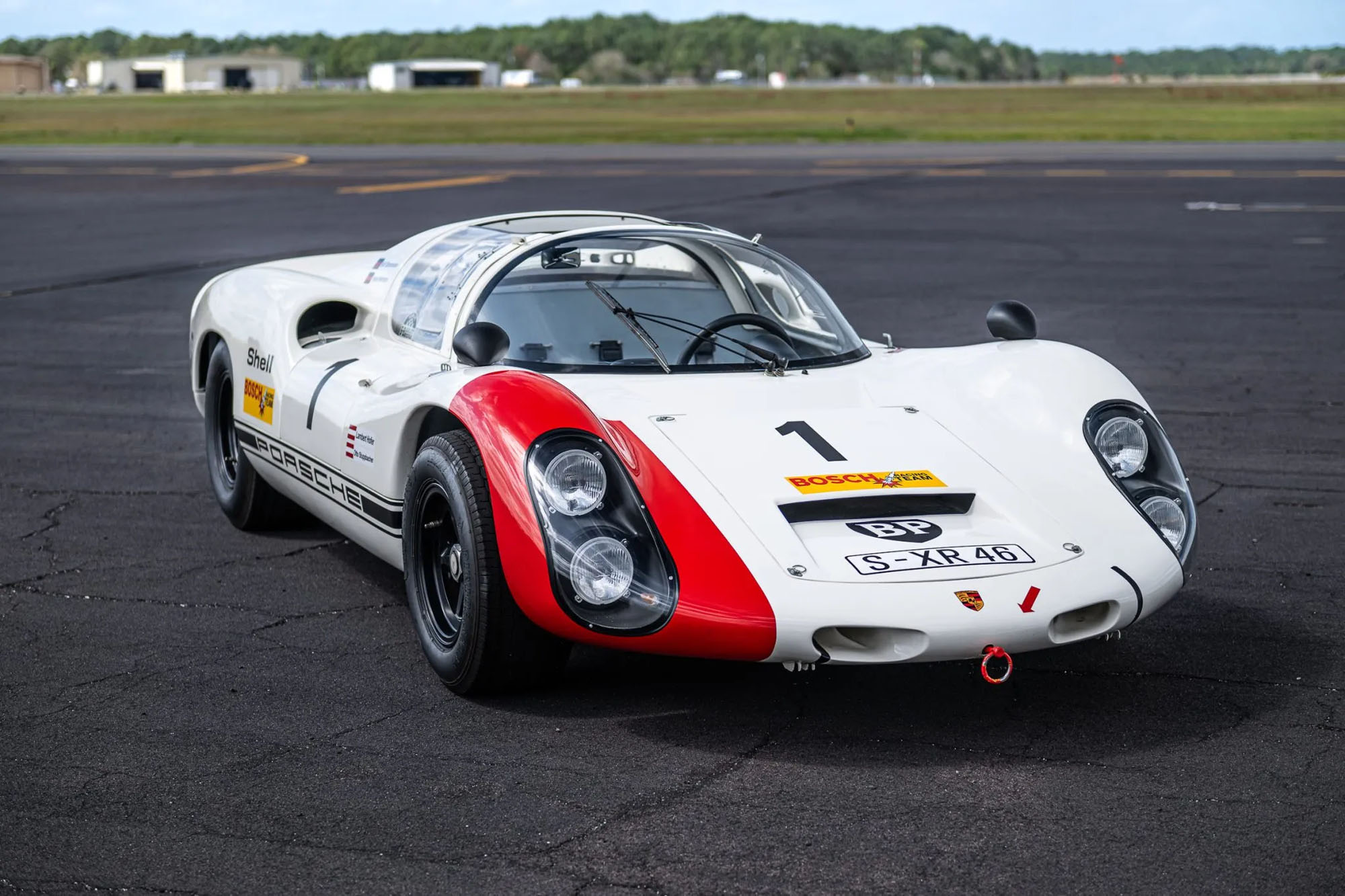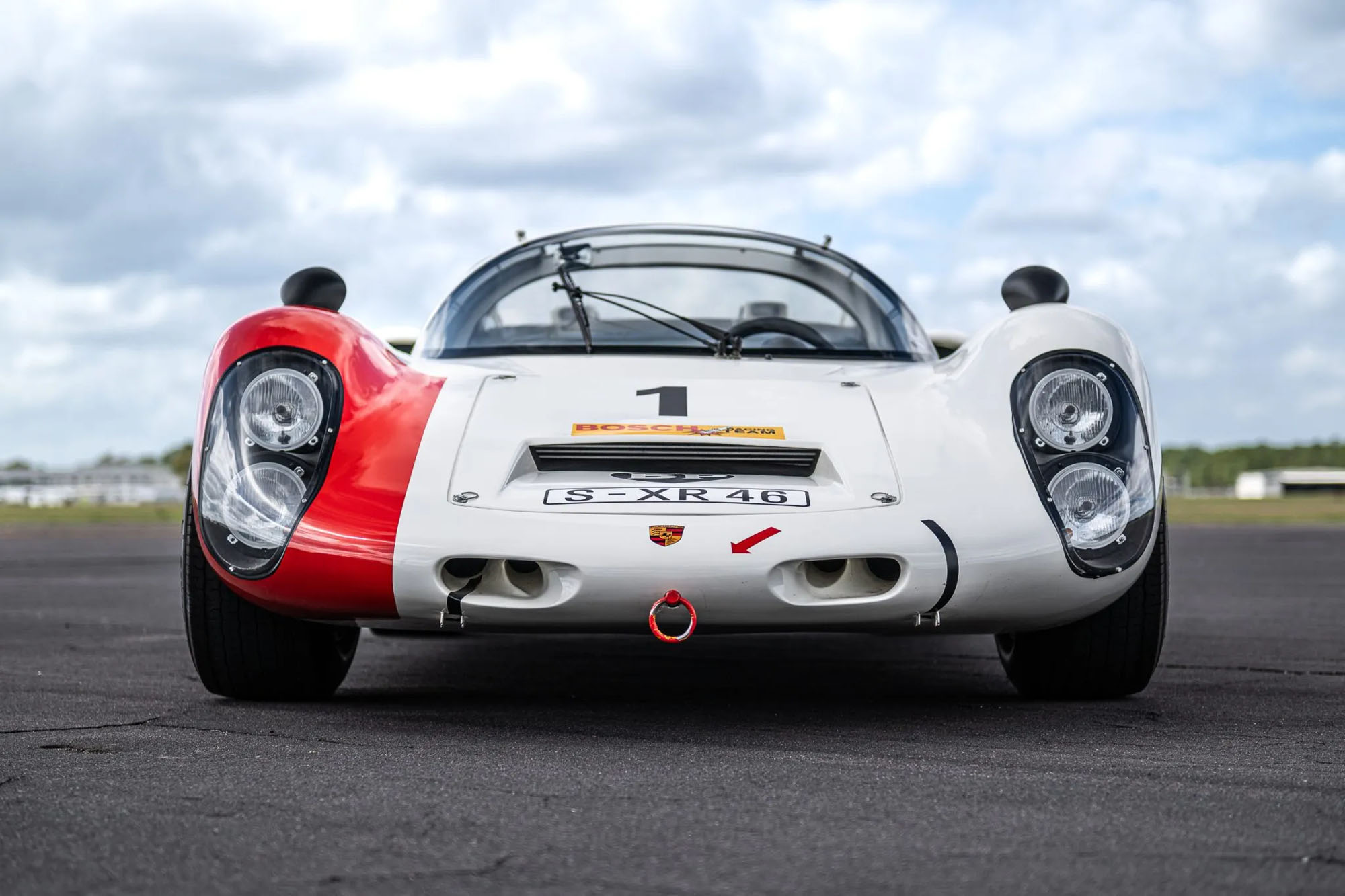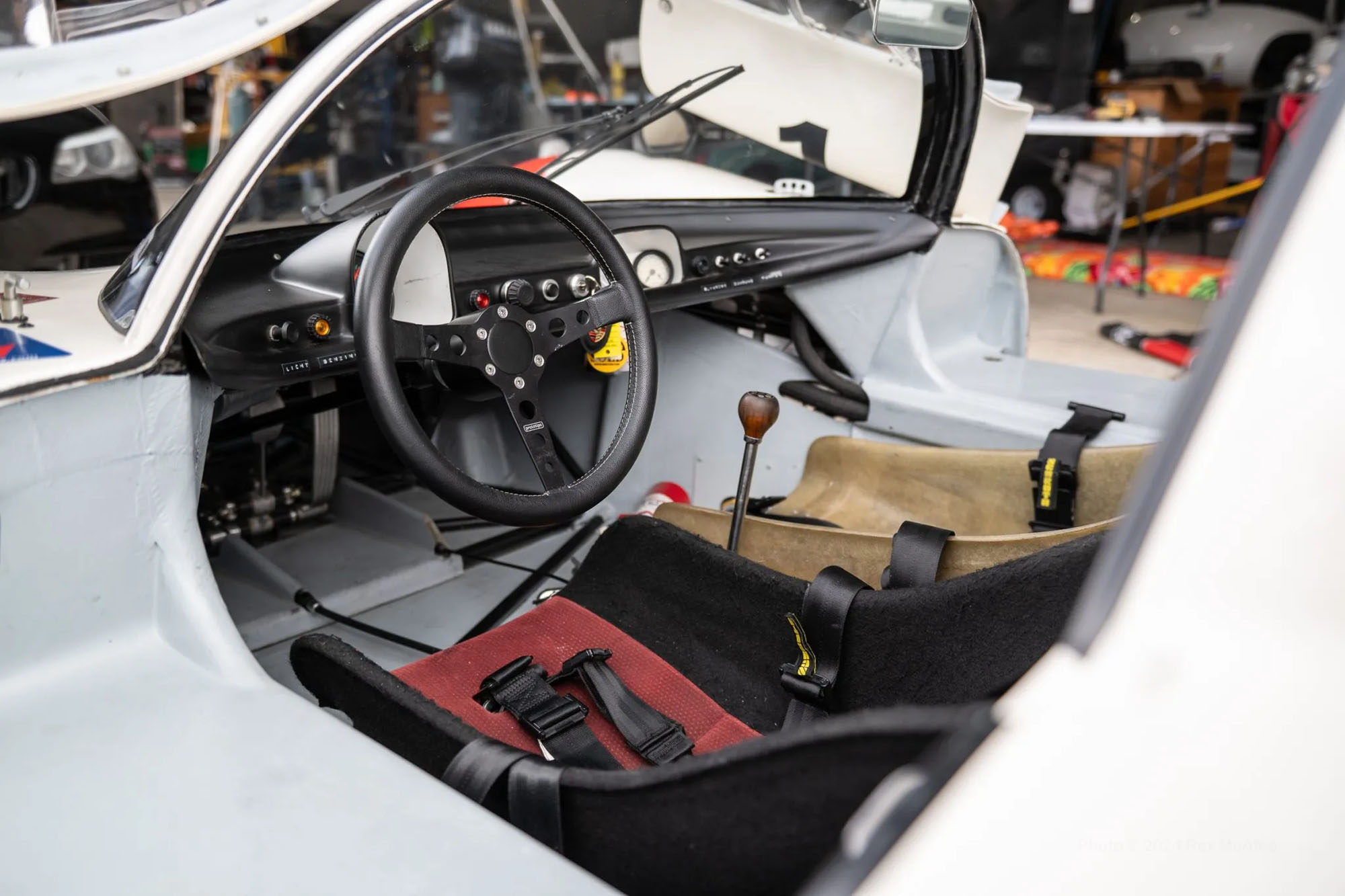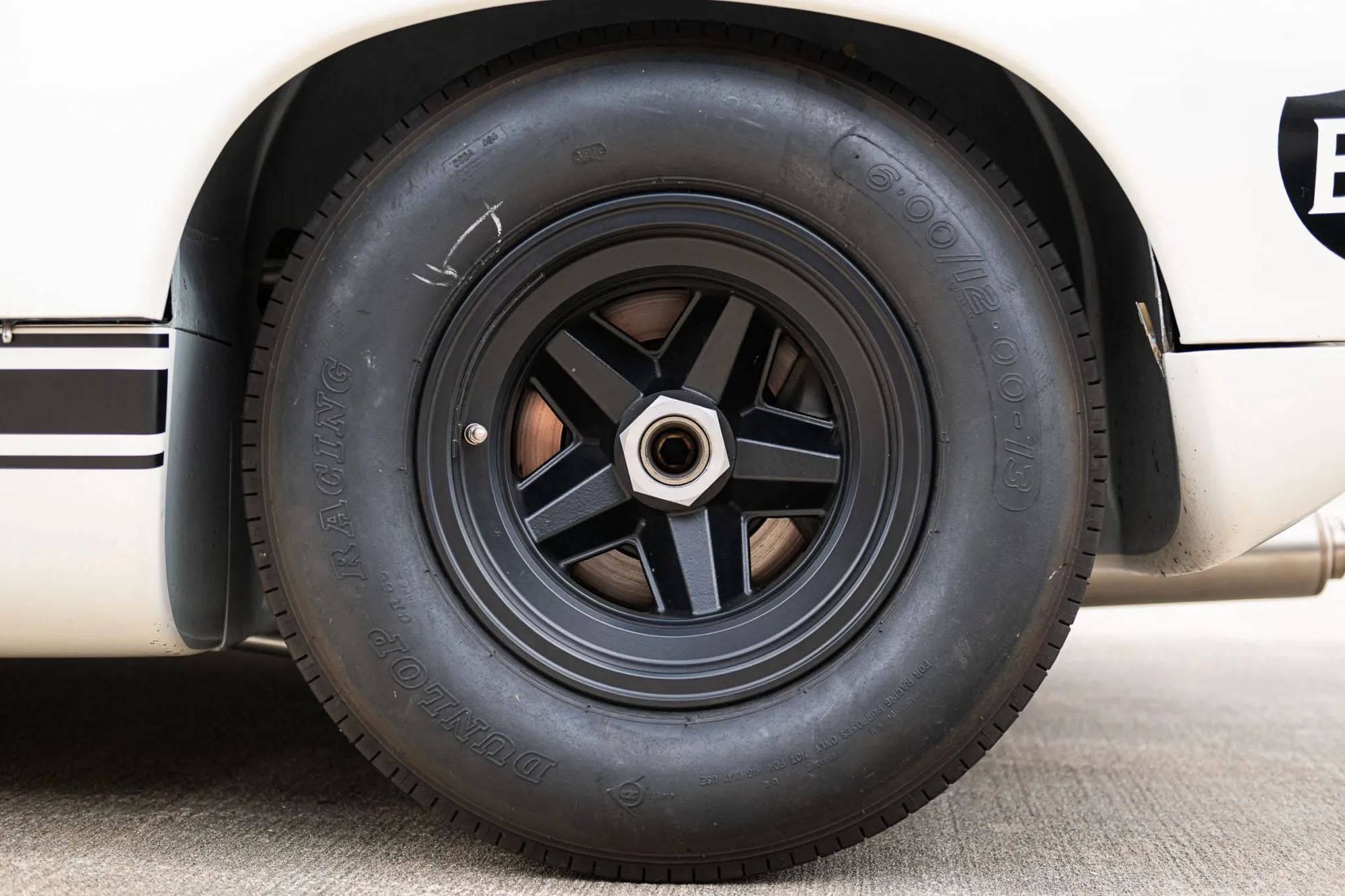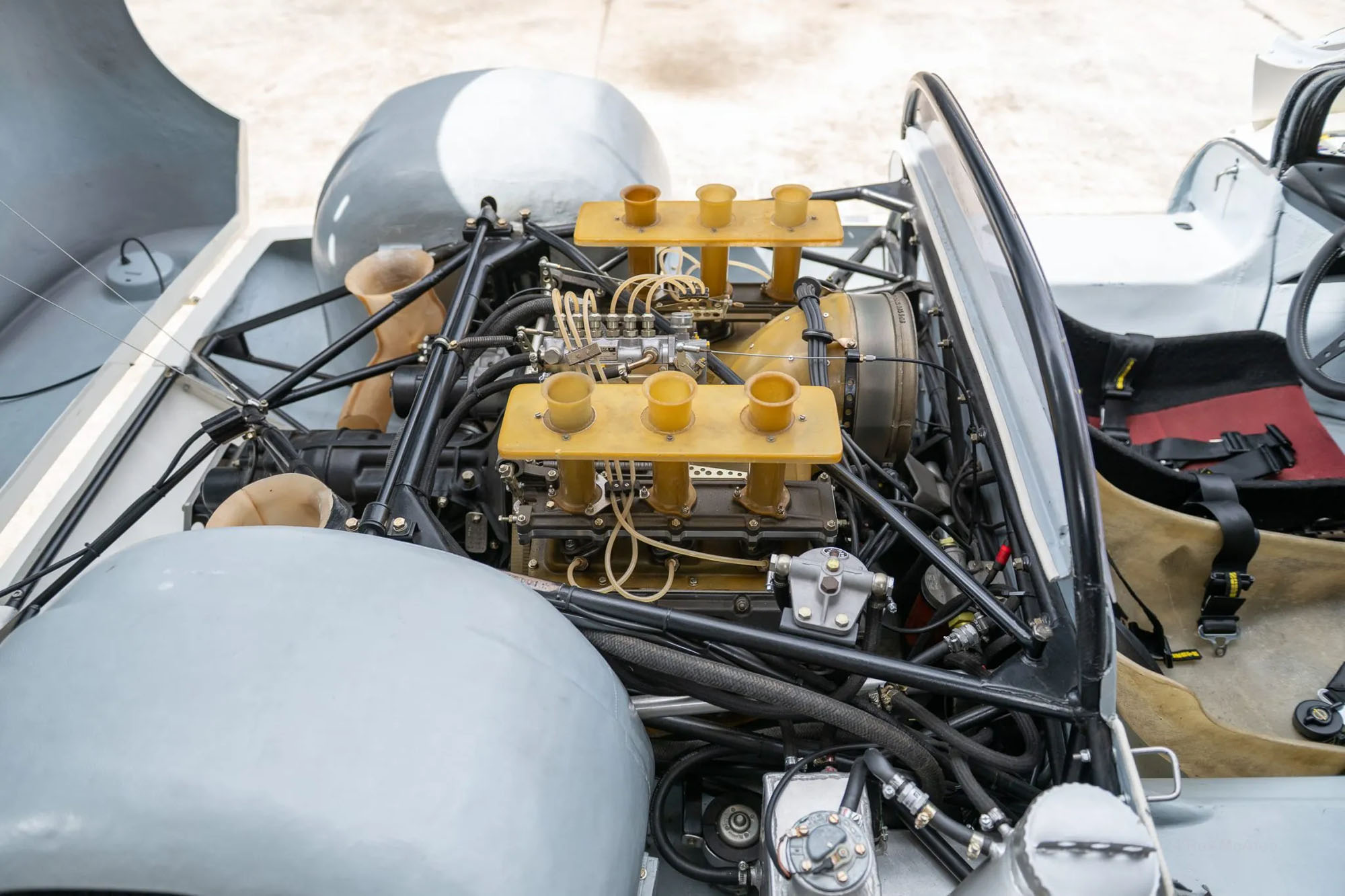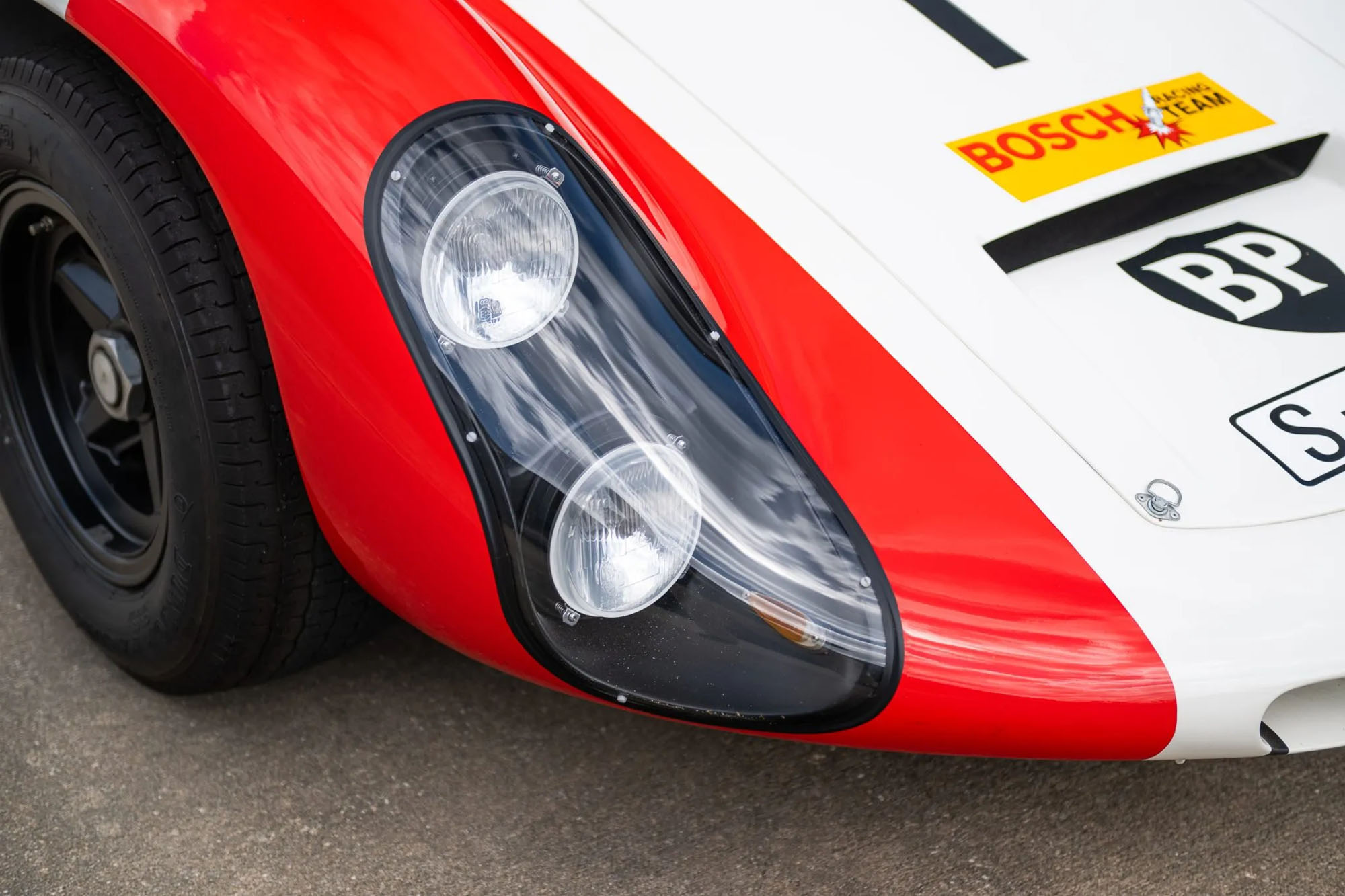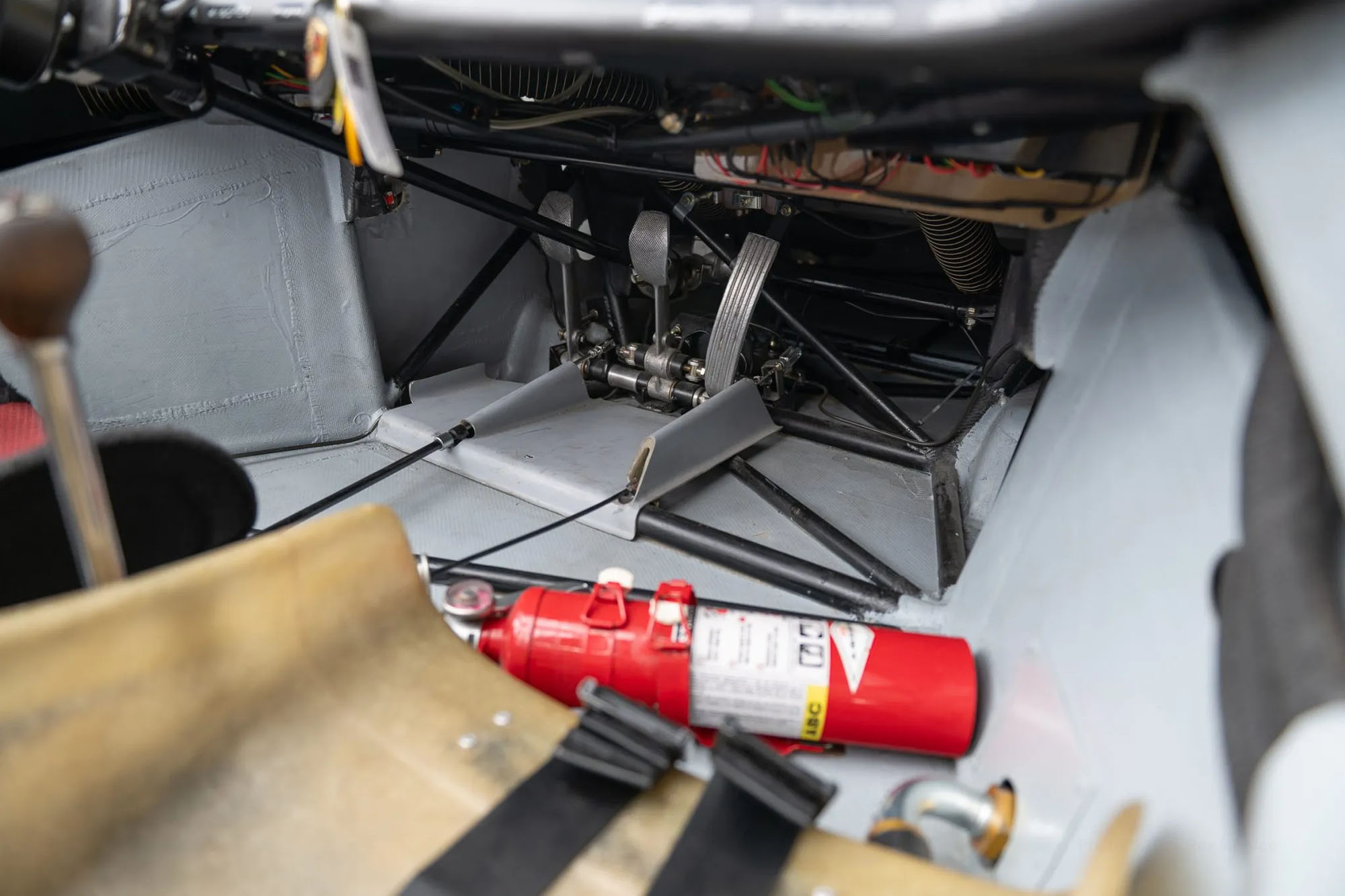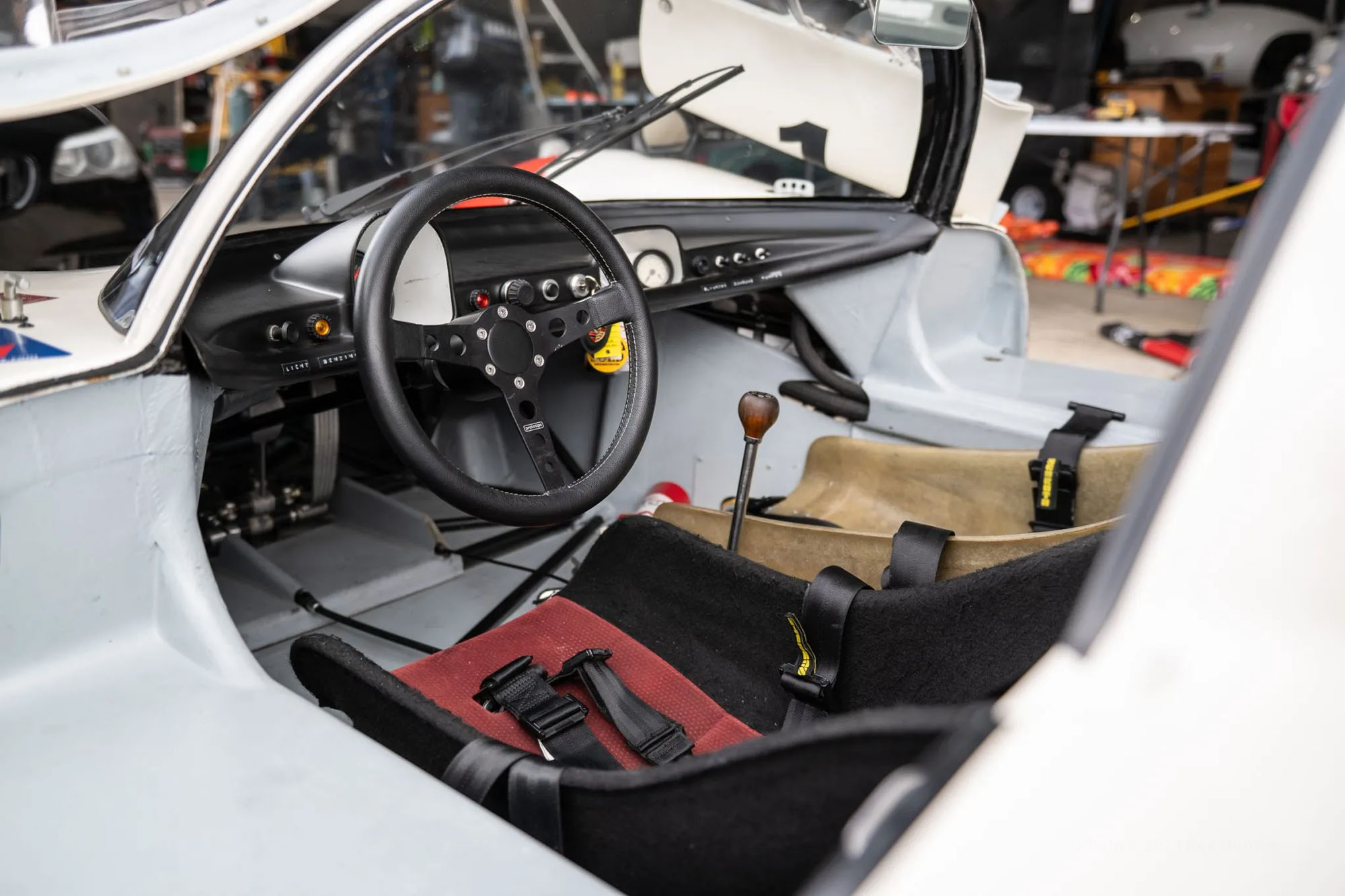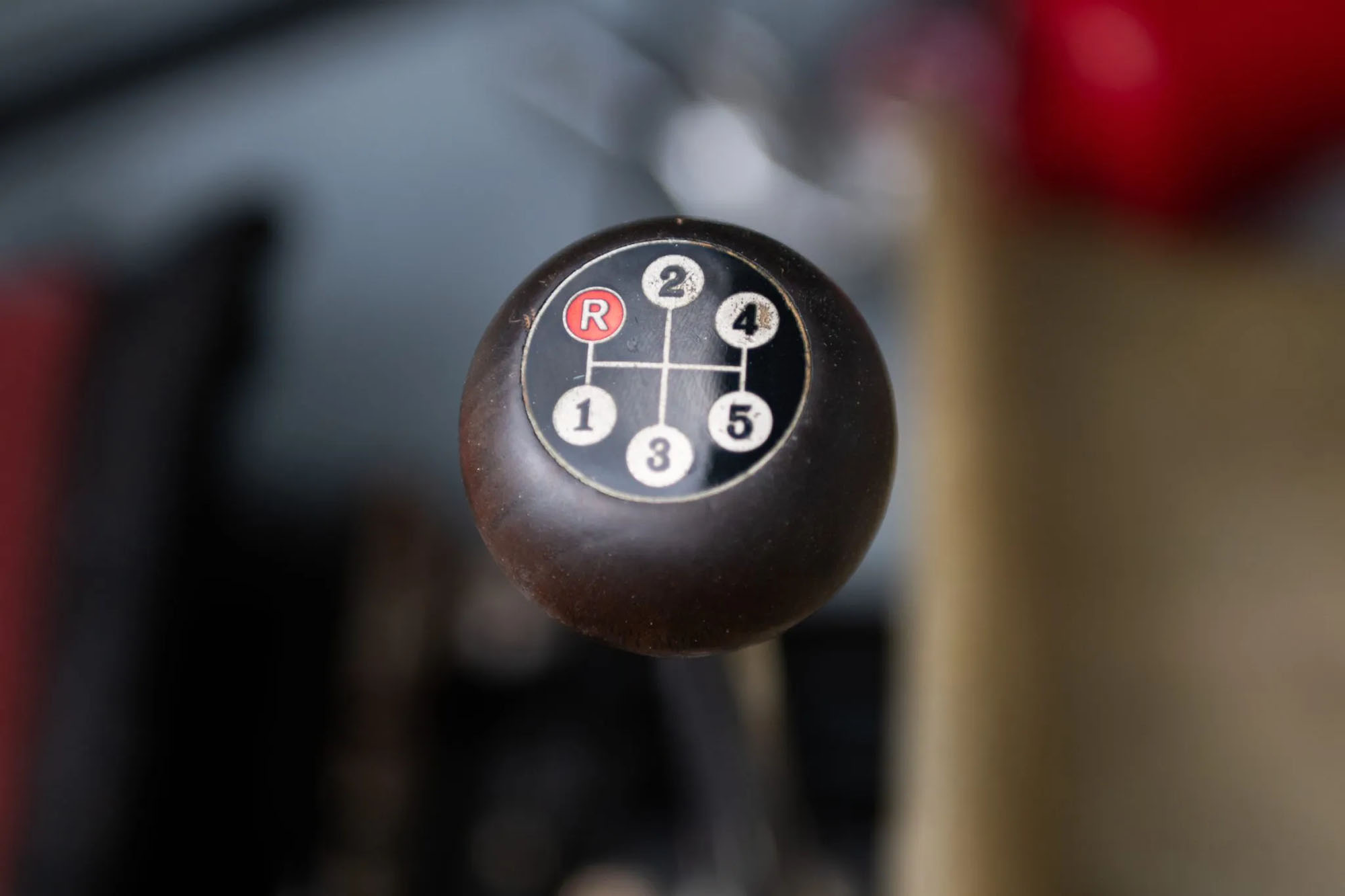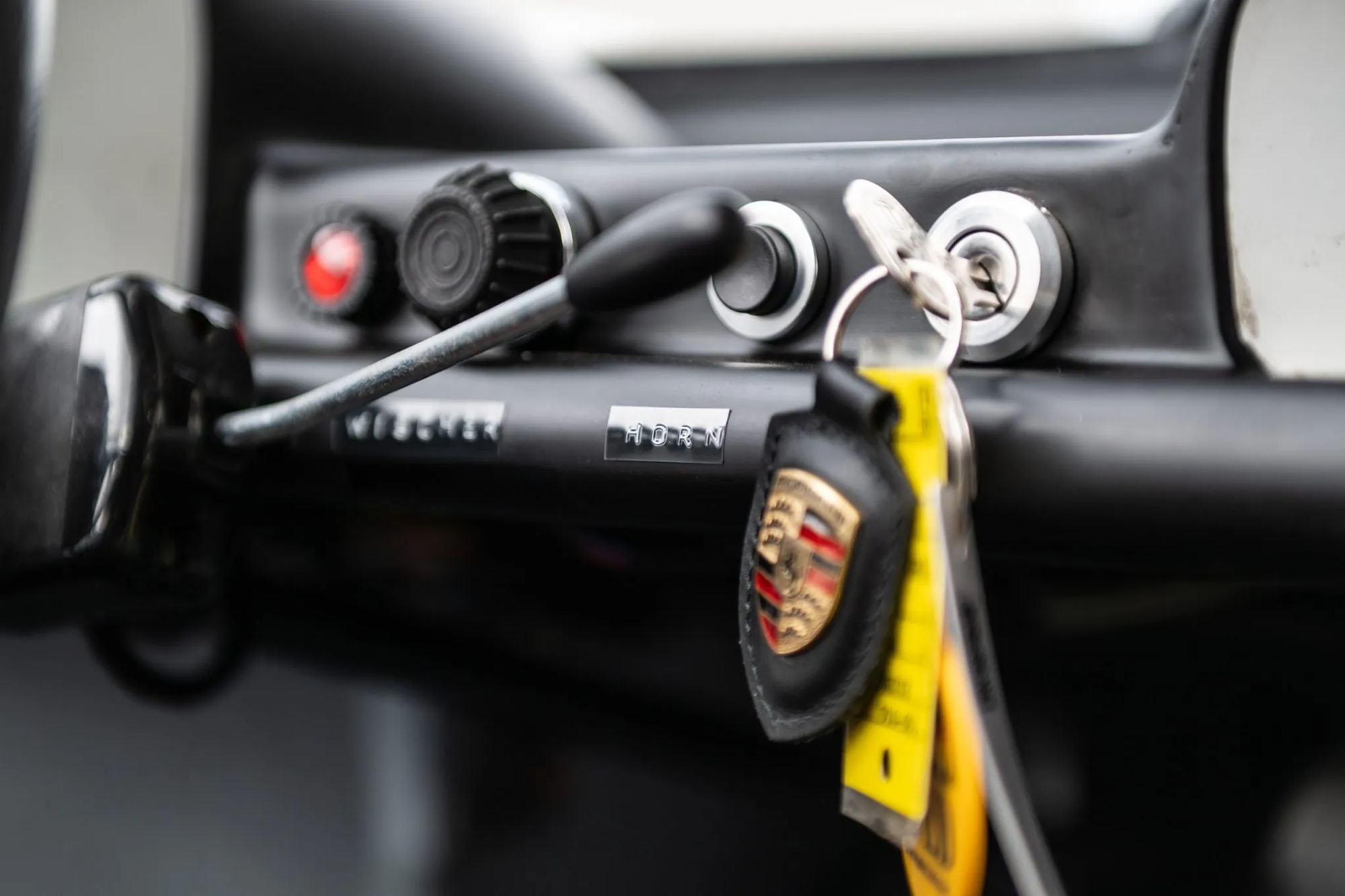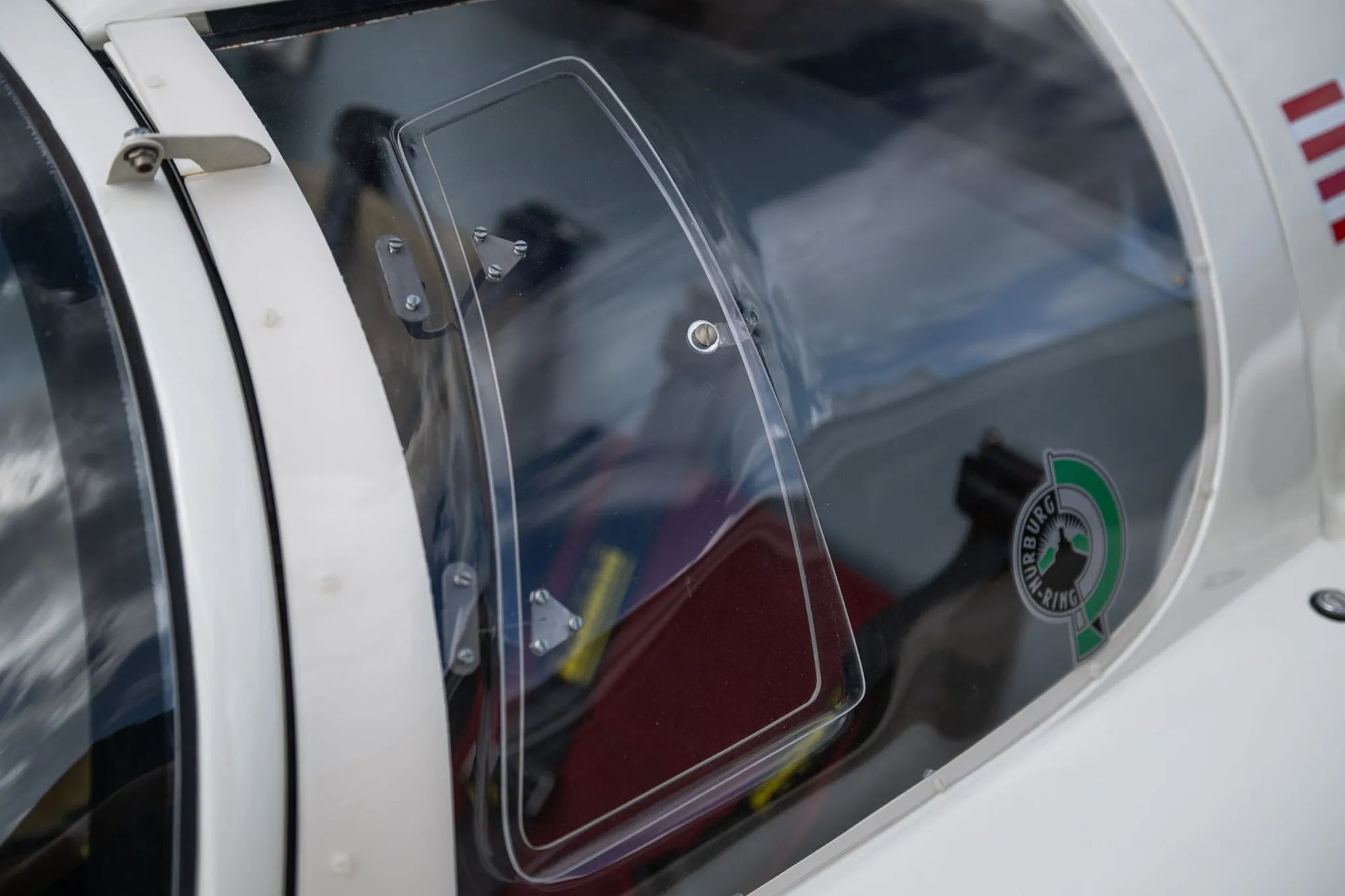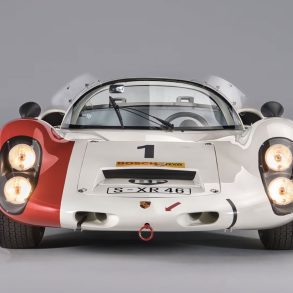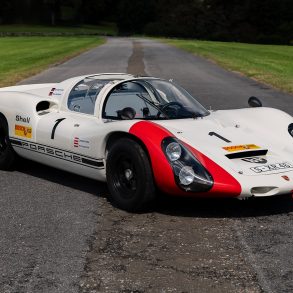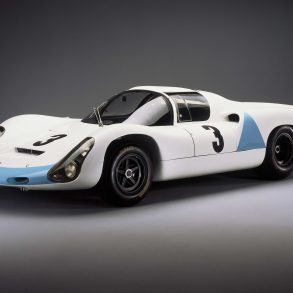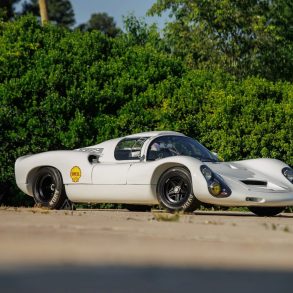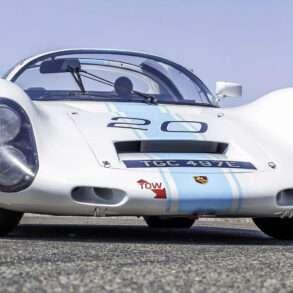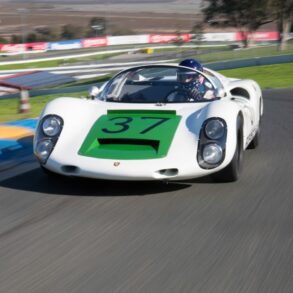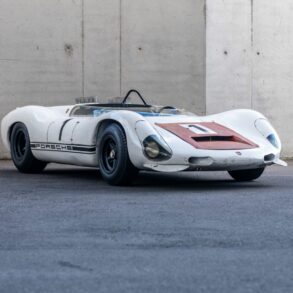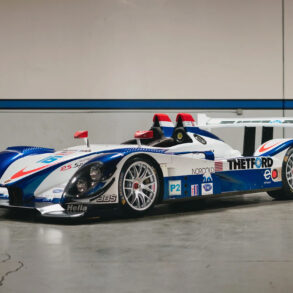This 1967 Porsche 910 is the first of 28 coupes built during a single year of production and is among 12 examples initially built with power from a 2.0L magnesium-case flat-six. Chassis 910001 made its debut as part of the factory works effort with Hans Herrmann at the wheel in the Trento Bondone Hill Climb in July 1966 en route to one of four top-three finishes in as many European Hill Climb Championship starts that year.
Background
Based on an evolution of the 1965 Ollon-Villars Spyder hill-climb prototype, the 910 was introduced in 1966 as a successor to the 906. Design features included Formula 1-style 13” wheels in place of the 906’s larger bolt-on units and a more-streamlined body with a removable roof panel that necessitated forward-hinged doors in lieu of its predecessor’s gullwing cockpit access. Early examples were powered by a variant of the Type 901 flat-six powerplant before a flat-eight-powered version emerged for use on higher-speed courses. The 910 model gave Porsche a sweep of the top four positions in the 1967 Nürburgring 1000 km as well as a victory in the 1967 Targa Florio.
Chassis: 910-001
In 1968, the car was sold to Porsche works driver Rudi Lins, who campaigned it in endurance races through a 1968 season that was highlighted by a class win and fourth-place finish overall in the 1000km Monza. It was subsequently registered for street use in Austria by Lins in 1969 before being sold to theater costume supply heir Lambert Hofer, who continued to campaign it through 1970 with support from Bosch Racing in races throughout the UK and Europe.
The car was sold by Hofer in 1994 to the seller’s father, who commissioned refurbishment work that began in the early 2000s and was later resumed and completed between 2014 and 2019. Work during the project included an engine overhaul, repair and alignment of the tube frame, a repaint of the fiberglass bodywork in white with a red nose accent, rebuilds of the running gear, and the removal of various modifications made over the car’s life.
Additional features include Bosch mechanical fuel injection with a single-row pump, slide throttles, twin-plug ignition, a five-speed manual transaxle, coilover suspension, 13” center-lock magnesium wheels, and fiberglass bucket seats with red and black cloth over the driver’s side.
After its completion, the car appeared at the 2019 Schloss Dyck Classic Days and in 2022 was imported to the US, where it appeared at the 2024 Greenwich Concours d’Elegance and the 2023 Amelia Werks Reunion. This 910 is now offered in Charlotte, North Carolina, by the owner’s son on behalf of the owner, who is located in Germany, with a 207-page book outlining the car’s history and documentation, an FIA Historic Technical Passport, the original Austrian registration, US import documentation, and German registration in the current owner’s name.
Restoration
A refurbishment that was completed in 2019 included removal of the bodywork from the frame, after which the latter is said to have been placed on a custom jig for straightening or replacement of bent tubes and alignment of the frame assembly. Bodywork repairs included the removal of fender flares that had been added in the 1970s or ’80s and reshaping of the nose to re-create the sharper profile with inward-set vents that distinguished the first 910 from subsequent examples. Following the repairs, the fiberglass body was refinished in its current shade of white with a red nose accent. Features include faired-in quad headlights, front and rear tow hooks, dual Vitaloni Sebring side mirrors, a body-color roof panel, and an electrical cut-off switch.
Black-finished 13” magnesium center-lock wheels were fitted during the refurbishment in place of larger wheels that had been added prior to the current owner’s purchase in the 1990s. Dunlop Racing tires measure 4.75/11.50 up front and 6.00/12.00 at the rear. Stopping is handled by disc brakes with aluminum calipers, ventilated front rotors, cooling ducts, and dual master cylinders with a balance bar. The brake system was rebuilt during the refurbishment that was completed in 2019.
The left-hand-drive cockpit houses a pair of fiberglass bucket seats, and the driver-side seat is said to have been repaired during the refurbishment and fitted with red and black cloth upholstery. Equipment includes Schroth six-point harnesses, a central shifter with a wood knob, a windshield-mounted rearview mirror, and a fire extinguisher.
The three-spoke MOMO Prototipo steering wheel sits ahead of a green-letter VDO 10k-rpm tachometer, while gauges to the driver’s right monitor oil temperature and pressure. The instrumentation is said to have been rebuilt during the refurbishment. The car is not equipped with an odometer, and mileage is unknown. The seller states that the car has been driven approximately 10-12 hours since completion of the refurbishment in 2019.
Engine
The 2.0-liter flat-six incorporates a magnesium engine case, dry-sump lubrication with centrally lubricated camshafts, a small magnesium cooling fan, twin-plug ignition with Magnetti Marelli distributors, Bosch mechanical fuel injection with a single-row pump, slide-valve throttle bodies, fiberglass velocity stacks, and fiberglass shrouding. The engine is said to have been overhauled by Manfred Rugen Motorentechnik in Germany in 2018 with work including machining and balancing of the crankshaft and the installation of replacement components including titanium connecting rods, Mahle pistons and cylinders, timing chains and rails, an oil pump, cylinder heads, camshafts, and valves. Additional features include a front-mounted oil cooler and an FIA-compliant fuel bladder that was installed during the refurbishment. Linkage from the fuel injection pump to the cabin has been added for use during cold starts.
Chassis
The five-speed manual transaxle was also overhauled during the refurbishment and features a ribbed case cooled by fiberglass ducts. The current gearing is marked on a tag affixed to the transaxle case. Suspension incorporates rose-jointed control arms, coilover shock absorbers, and adjustable anti-roll bars. Dual stainless-steel mufflers have been added.
Documentation
A 207-page book assembled by the seller and his father is viewable in the photo gallery below and includes a summary of the car’s history, a Magnetic Optical Imaging report on the chassis number, photos of the car before and during the refurbishment, images of the car’s original Austrian registration (shown above) and current registration, and the car’s FIA Historic Technical Passport. The book also includes invoices from refurbishment work between 2017 and 2019 totaling approximately €303k as well as dynamometer results from Manfred Rugen. A seller-provided list of spare parts is also viewable in the gallery.
The car is being sold on its German registration, which serves as an ownership document. The race car was imported into the United States in 2022 and documentation from Department of Homeland Security can be seen in the gallery below.
Bidding Info
Go HERE


